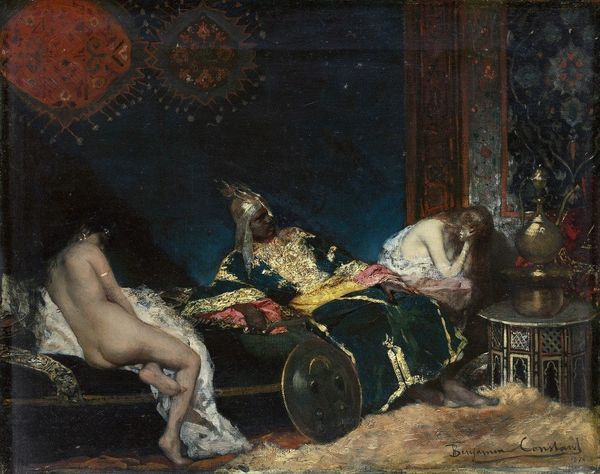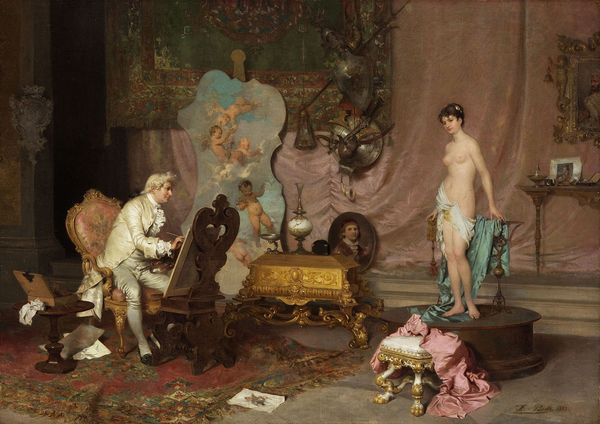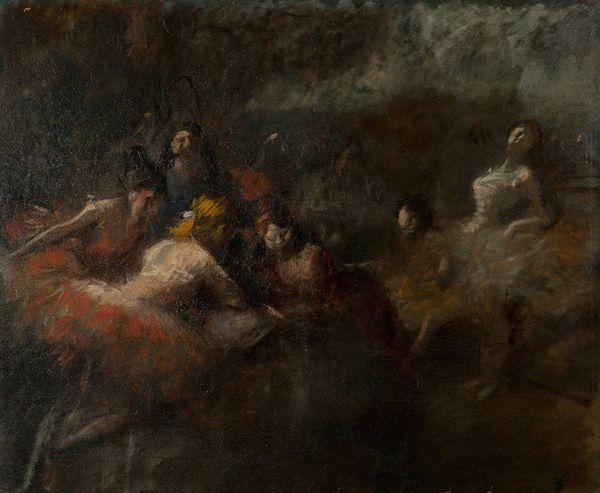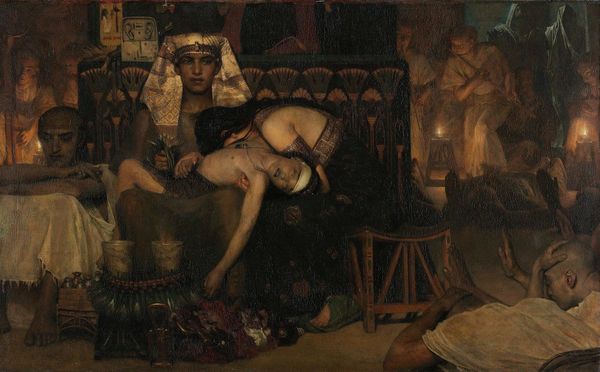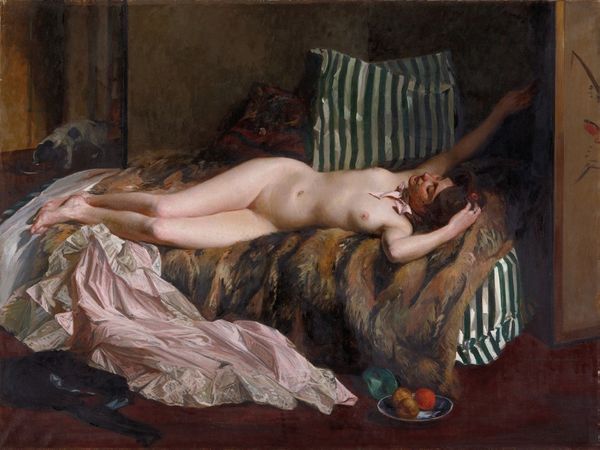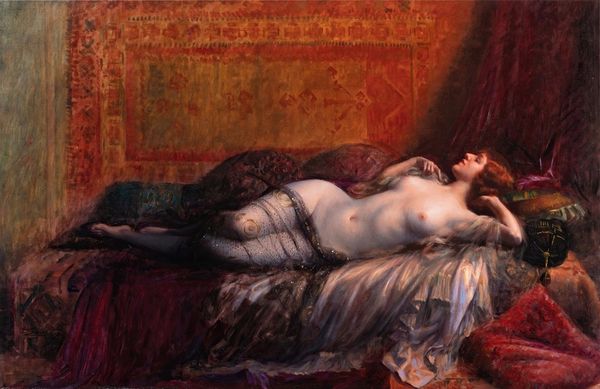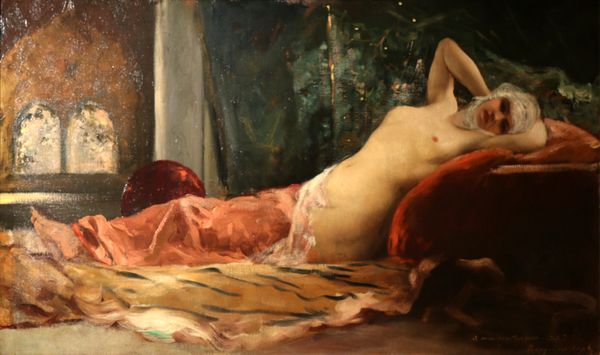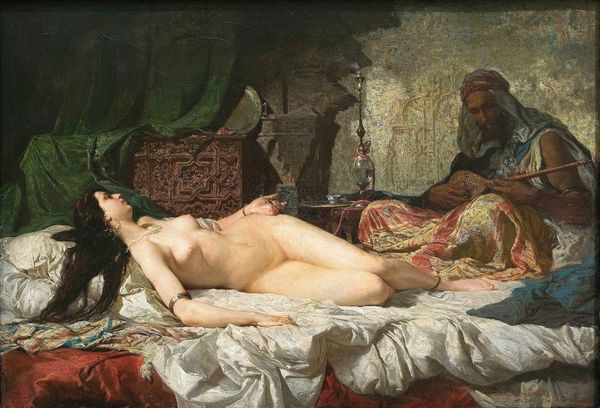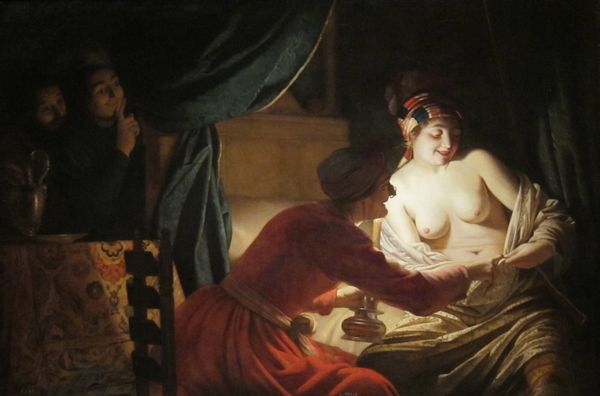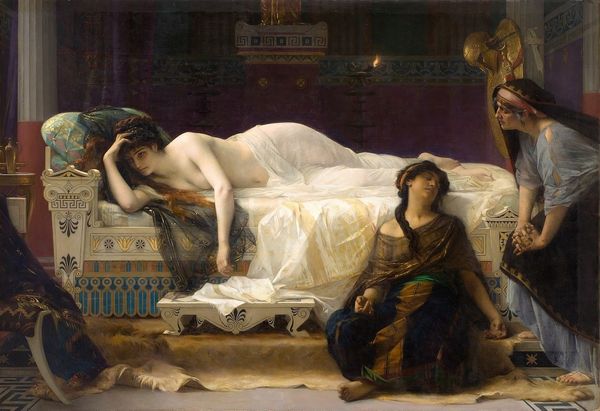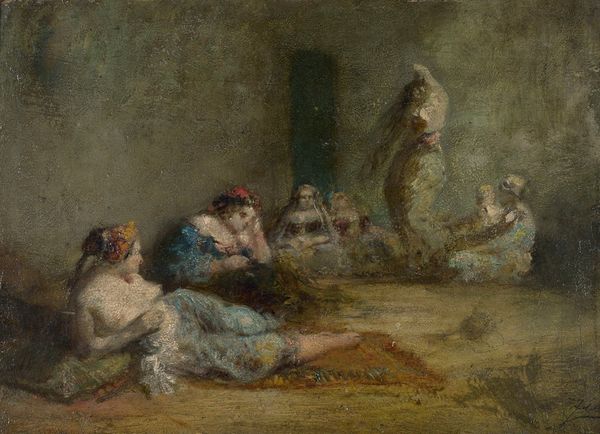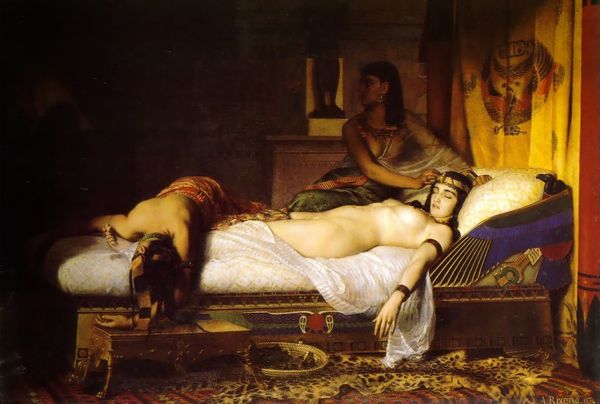
Copyright: Public domain
Editor: This is Jean-Joseph-Benjamin Constant's "Les Chérifas," painted in 1884 with oil paints. The scene feels so lush, but also… sort of unsettling in its depiction. What do you see in this piece? Curator: Well, the materiality speaks volumes, doesn’t it? Look at the visible brushstrokes, the layers upon layers of oil paint that create this almost tactile sense of… artifice. It begs the question: what materials were used and how did they affect labor to create this orientalist fantasy, likely consumed by wealthy patrons? Editor: I see what you mean. It feels less about capturing a real scene and more about the painterly execution, maybe even consumption of it? Curator: Precisely. Consider the 'Orient' as a constructed market— raw materials, such as pigments and canvas from afar that were acquired and used for producing orientalist paintings in European studios. The social context surrounding this work highlights that power dynamic: France had considerable colonial presence in North Africa. This context really influenced consumption. Editor: So, beyond just brushstrokes and subject matter, you’re seeing the entire process, the colonial framework informing its creation? How much of the process of ‘making’ is actually part of what this painting *is*? Curator: Absolutely! And not just the aesthetic “making”, but the socio-economic forces—the means of production themselves! Each element that contributed is part of its total reality and shapes our contemporary view. The labour, exploitation, consumption - it is inseparable. Editor: I had only considered how the scene and models may be objectified, but I am seeing the whole context as part of the piece. The supply chain in effect contributed. Thanks! Curator: My pleasure! Recognizing art's entanglement with process helps to challenge these colonial gazes!
Comments
No comments
Be the first to comment and join the conversation on the ultimate creative platform.
